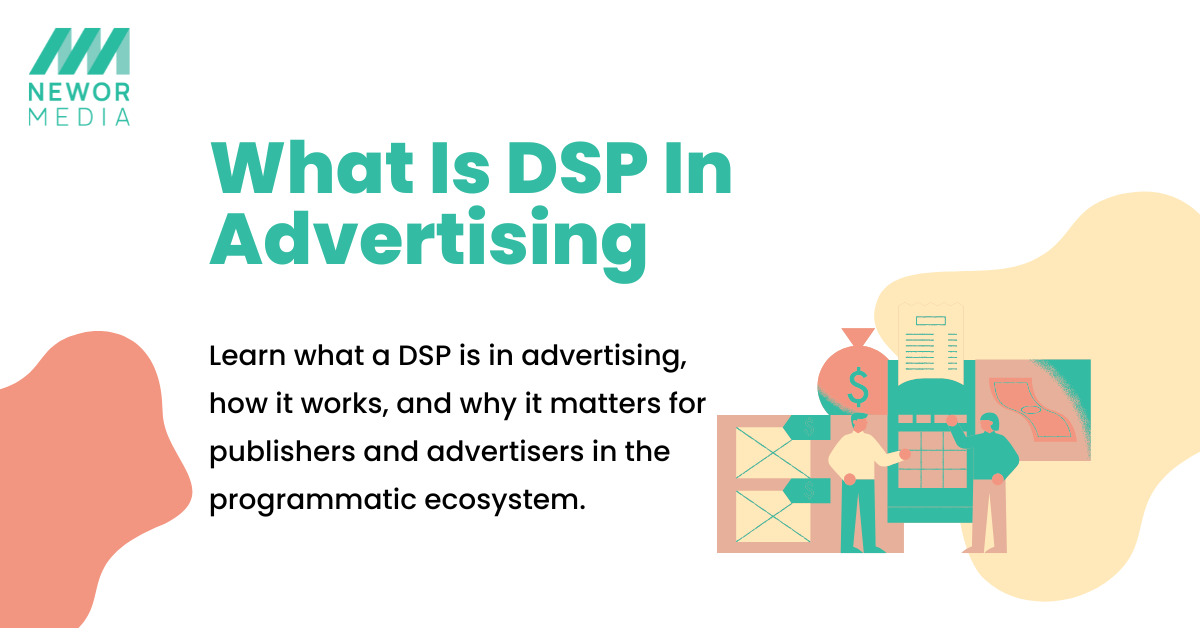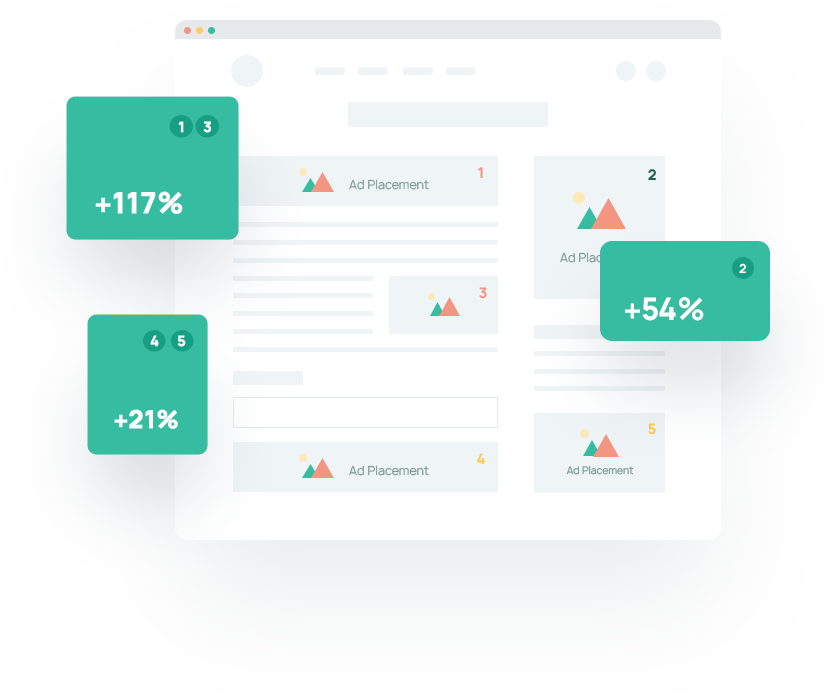You have probably heard the term DSP tossed around a lot if you’re a publisher or advertiser stepping into the world of programmatic advertising. It might sound like another jargon in the industry but understanding what a DSP is and how it affects the broader advertising ecosystem can make a real difference in how you manage campaigns, budgets, and performance.
So, let us understand in detail what it refers to and why it is important. No jargon. No fluff. Just a simple guide to Demand Side Platforms and how they power today’s digital ad buying.
What Does DSP Stand For?
DSP is basically an acronym for Demand Side Platform. It is a type of software that enables advertisers and agencies to automate the process of buying digital ad inventory across multiple platforms.
Instead of calling each publisher or ad network to book ads manually, advertisers use a DSP to access large-scale inventory from across the web, everything from websites and mobile apps to video content and connected TV.
It is like a marketplace shop for ad buying, but smarter.
What is a DSP in Advertising?
Advertisers purchase ad impressions programmatically using a technology platform that is DSP. It automates and streamlines the bidding process, allowing buyers to set their targeting criteria, bid amounts, creative assets, and campaign goals, all from a single dashboard.
Once configured, the DSP connects with ad exchanges and supply-side platforms (SSPs) to find the right inventory in real-time. It evaluates each impression based on your criteria and bids accordingly.
All of this happens in milliseconds before a web page loads.
Why Use a DSP?
The digital advertising space is huge and fragmented. Advertisers would need to manage campaigns across multiple ad networks and platforms manually without a DSP. That is not just inefficient; it is nearly impossible on a scale.
Here’s why DSPs matter:
- Automation: No need for back-and-forth with publishers. The DSP handles it.
- Real-Time Bidding (RTB): Bid on ad impressions in real-time, based on data.
- Audience Targeting: Reach specific user segments using first-party and third-party data.
- Multi-Channel Access: Display, video, mobile, native, connected TV—all in one place.
- Analytics & Optimization: Track performance and tweak campaigns on the go.
How Does a DSP Work?
Let’s walk through what happens behind the scenes:
Set Campaign Goals
Advertisers define their campaign parameters—budget, audience, location, device, ad format, and more.
Connect to Supply
The DSP connects to various SSPs and ad exchanges, where publishers list their available ad space.
Bid in Real-Time
When a user visits a site, an auction happens. The DSP evaluates whether the user matches your targeting criteria. If they do, it bids on that impression.
Serve the Ad
If the bid wins, your ad is instantly served on the publisher’s site or app.
Track & Optimize
The DSP monitors how your ads perform—clicks, views, conversions—and makes recommendations or automated optimizations to improve ROI.
All of this happens in a blink. That’s the power of programmatic.
What’s the Difference Between a DSP and an SSP?
This is a common area of confusion, so let’s clear it up.
- A DSP (Demand Side Platform) is used by advertisers to buy inventory.
- An SSP (Supply Side Platform) is used by publishers to sell their inventory.
The DSP is on the buy-side; the SSP is on the sell-side. They connect through ad exchanges, where real-time auctions happen. Think of the DSP as the buyer’s agent and the SSP as the seller’s agent.
Types of DSPs
There are two main categories of DSPs:
Self-Serve DSPs
Ideal for advertisers and agencies who want more control over their campaigns. You set the parameters, manage the creative, and adjust targeting as needed. Good for experienced hands-on teams.
Managed Service DSPs
These are run by account teams or platform partners who manage your campaigns for you. They’re helpful if you don’t have the in-house resources or want a more hands-off approach.
Some DSPs offer both options, giving you flexibility depending on your needs.
What Makes a Good DSP?
Not all DSPs are built the same. When evaluating a DSP, consider:
- Inventory Access: Does it tap into premium publishers and global exchanges?
- Targeting Capabilities: Can you use first-party data? Geo, device, contextual targeting?
- Cross-Channel Reach: Does it cover mobile, video, display, and CTV?
- User Interface: Is the platform easy to use and navigate?
- Reporting Tools: Do you get actionable insights, not just data dumps?
- Support & Integration: Does it integrate with your existing stack and offer reliable support?
Examples of Popular DSPs
Here are some of the leading demand side platforms on the market today:
- The Trade Desk
- Google Display & Video 360 (DV360)
- MediaMath
- Amazon DSP
- Adobe Advertising Cloud
Each has its own strengths—some are better for enterprise, others for mid-sized businesses or specific verticals. The best fit depends on your goals, budget, and team setup.
DSP Advertising: Pros and Cons
Pros:
- Massive reach and scale
- Precision targeting
- Real-time optimizations
- Better cost efficiency through RTB
- Centralized campaign management
Cons:
- Learning curve for beginners
- Data privacy complexities
- Platform fees or minimum spends (for some DSPs)
That said, most advertisers today see DSPs as essential, not optional—especially if you’re running high-volume or multi-channel campaigns.
Who Should Use a DSP?
You don’t need to be a Fortune 500 brand to use a DSP.
If you’re:
- Running digital ads at scale
- Targeting audiences across different platforms
- Looking for better control over spend and performance
- Wanting unified reporting and real-time bidding
…then a DSP is worth exploring.
Even smaller publishers and advertisers can benefit from the automation and targeting that demand side platforms provide—especially when paired with the right strategy and creative.
Final Thoughts: Is a DSP Right for You?
Now that you know what a DSP is, you can see it’s not just tech jargon—it’s a core part of modern digital advertising. If you’re buying ads across the open web and want more efficiency, reach, and control, using a demand side platform makes a lot of sense.
The key is choosing the right platform for your needs—and making sure you have a strategy that goes beyond just placing bids. Like any tool, a DSP works best when backed by good data, solid creative, and smart campaign goals.
And if you’re a publisher, understanding how DSPs work helps you get the most out of the SSPs and networks you’re connected to. After all, better demand means better monetization.


One Comment
Comments are closed